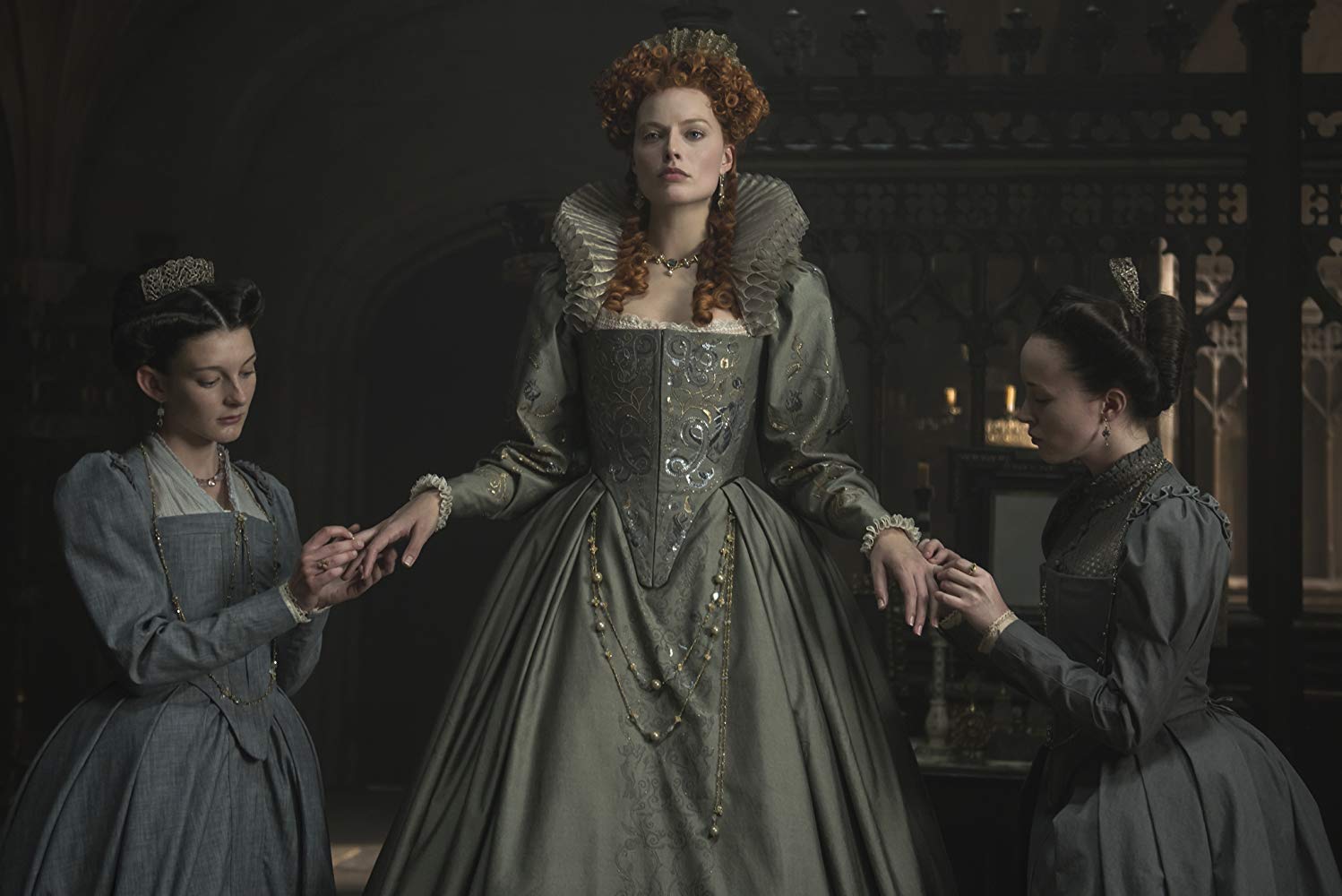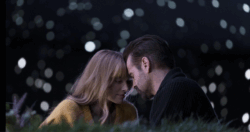Mary Queen of Scots is an entertaining, but ultimately uneven period drama. It has gorgeous costumes, a wonderful pair of lead actresses, some genuinely compelling palace intrigue, and a few moments of inspired storytelling. However, the overall product feels disjointed and unnecessarily modernist, given the numerous, odd attempts by the filmmakers to update the story. The quality of the film rises and falls intermittently, reaching a surprisingly moving high by the time the two queens finally meet that saves the entire experience.
The movie begins in 1561, when the Catholic Mary Stuart (Saoirse Ronan) returns to Scotland to reclaim her throne after living in exile in France for most of her life. The news quickly reaches her Protestant cousin in England, Queen Elizabeth I (Margot Robbie), who views Mary’s return as a threat to her reign due to the religious struggles in Great Britain. She fears the populace may rally behind her Scottish relative, especially considering Mary’s much-talked-about beauty and strong will. In these initial scenes, the film relies too heavily on fast cuts between scenes in the two kingdoms. The technique attempts to draw parallels between the monarchs as they send passive-aggressive letters to one another, but the problem is that the same scene seems to simply repeat itself in a different setting and with different players. The film eventually shifts its focus entirely to Mary, understandable per the title, but vexing given its initial emphasis on Elizabeth.
Soon, the question of succession and marriage arises between the rival queens, much to their male-dominated courts’ chagrin. The men feel emasculated by women in power, and the theme invites some blatantly chauvinistic comments—the courtiers are unable to understand how the “the world has come to this… with men servicing the whims of women,” and call the phenomenon “a scourge upon their land.” These reductionist viewpoints are plausible for the time period, but rather than blending them with more political, ideological, and religious subtext, the film merely scratches the surface and makes the sex of the person in power appear as the problem. Sadly, the film does not even effectively capitalize on its feminist front, giving our leads some witless romantic melodrama once their respective suitors come into play.
The movie picks up momentum midway through, after an awkwardly staged battle sequence in the mountains of Scotland that leaves a lot to be desired in terms of grandeur and scale for the filmmakers clearly did not have the budget. Likewise, shortly afterwards, there is a rather distasteful sex scene between Mary and her second husband, Lord Darnley (Jack Lowden), that is frustratingly ambiguous on what it is trying to suggest about these characters’ already opaque relationship. Nevertheless, once the double-crosses and betrayals begin, the movie successfully shifts gears and darkens, and Mary’s downfall plays out like a blend between a shocking episode of Game of Thrones and a Shakespearean tragedy.
Saoirse Ronan and Margot Robbie shine as the two iconic monarchs, making up for most of the film’s flaws. Ronan’s fierce performance commands the screen, revealing a royal with heart and brains, whose determination and ambition resulted in her own undoing. Robbie, as Elizabeth, almost unrecognizable at times in Jenny Shircore’s outstanding makeup, imbues her character with raw vulnerability and humanity, painting an engaging image of a deeply insecure but resolute woman. Their confrontation at the end of the film, though it never happened in real life, is the highlight of the movie, allowing both characters to come to terms with their destinies.
That said, while Mary’s arc is fully fleshed out, Elizabeth’s feels incomplete. Similar to the much better 1998 film Elizabeth starring Cate Blanchett, Elizabeth’s story ends with her decision to dedicate her life to England. However, in that case there was an entire movie building up to that transformative moment; in Mary Queen of Scots she has less than half a movie, making her arc not as impactful as it could have been had she not been absent during most of the second half. In the same way, the male characters are merely a bunch of British actors with thick accents in wigs and 1500s attire devoid from personality or depth. They are smartly sidelined, but stronger characterizations would not have hurt anyone; as they are presented they come off as uninteresting and frivolous.
House of Cards alum Beau Willimon’s script tries to distractingly, and often inaccurately, modernize the story way too much, while Josie Rourke’s serviceable direction lacks flourish, style, and sense of spectacle. Neither of them come close to reaching the greatness of 2018’s The Favourite, another English royal drama that successfully updates its story of historic women in power. Likewise, for a period film, both John Mathieson’s cinematography and Max Richter’s score are bland and uninspired. Even the production design fails to create a lived-in, dynamic environment, especially in England where all scenes solely take place in Elizabeth’s palace. In the crafts, only Alexandra Byrne’s exquisite costumes are praiseworthy, dressing our two leads in appropriately regal gowns.
All in all, even when Mary Queen of Scots blunders, the film has enough elements to make it a worthwhile time at the cinema. The movie sports a pair of truly captivating actresses in the lead and, as sporadic as they are, there are some strong scenes scattered throughout. There is definitely a much better film to be made out of this story, but court scheming, Elizabethan English, and lavish costumes are always a safe bet for solid entertainment value.






